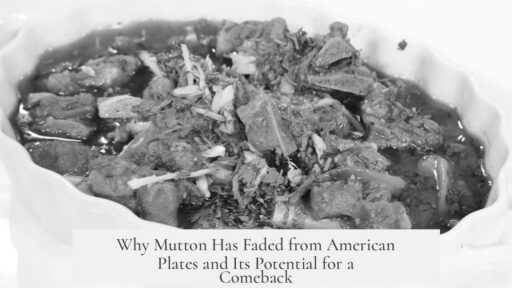The primary reason Americans don’t commonly eat mutton is the historical shift in the livestock industry that favored beef over sheep meat, combined with ambiguous labeling practices and cultural preferences in the United States.
Historically, sheep farming was once a significant industry in the US. The sheep inventory reached around 51 million head in 1884 and remained high until about 1942. Sheep meat, including both lamb and mutton, was more prevalent then. However, the expansion of railroads and settlement of the Midwest opened vast grazing lands, making it ideal for raising large beef cattle. Over time, beef cattle farming outpaced sheep farming due to its profitability and suitability for the available land.
The emergence of industrial farming in the 1950s accelerated this shift. Concentrated Animal Feeding Operations (CAFOs) appeared first in poultry and soon in cattle, designed to meet rising meat demand. Beef cattle, although requiring more resources than sheep, produce larger amounts of meat for roughly the same human effort. Additionally, beef cattle fit better into the CAFO model and benefit from easier predator protection, enhancing their commercial appeal.
This created competitive pressure on sheep farming. Since sheep and beef cattle compete for similar land and resources, the beef industry’s ability to expand rapidly meant sheep lost market share. The sheep inventory steeply declined as beef industries capitalized on plentiful grazing land, delivering more meat faster. Market forces pushed sheep farming toward contraction, and today, the sheep population is much smaller relative to its peak.
Another factor contributing to the perception that Americans don’t eat mutton involves labeling and awareness. The US Department of Agriculture (USDA) uses the term “lamb” broadly. Legally, “lamb” can describe meat from sheep of any age, as the USDA does not have a strict definition to separate lamb and mutton. This contrasts with other countries like the UK and New Zealand, where labeling laws clearly distinguish lamb (animals less than 12 months old) from mutton.
This ambiguity means consumers may unknowingly eat mutton or older sheep meat sold under the label “lamb.” The sheep industry in the US does not universally adhere to consistent quality grading or labeling, as USDA grading remains voluntary and sees less than half participation. Consequently, shoppers often cannot identify the exact type of ovine meat they purchase.
Lastly, cultural preferences in the US contribute to the avoidance of sheep meat, especially mutton. While demand for meat overall has grown, American consumers favor beef and poultry. Lamb itself remains less popular, and the stronger flavor of mutton often deters acceptance. The cultural evolution of meat demand shapes the livestock industry’s offerings and consumer choices.
| Factor | Explanation |
|---|---|
| Historical Industry Shift | Sheep farming peaked but was overtaken by the expanding, more profitable beef industry in mid-20th century. |
| Industrial Farming Advantages | Beef fits better in industrial CAFO models and produces more meat efficiently compared to sheep. |
| Land Competition | Sheep and beef require similar resources; beef’s profitability enabled it to dominate available grazing land. |
| Labeling Ambiguity | USDA lacks strict definitions separating lamb and mutton; many labeled “lamb” cuts may be older sheep meat. |
| Cultural Preferences | US consumers prefer beef and poultry; mutton’s stronger flavor leads to lower demand. |
In sum, Americans’ low consumption of mutton results from economic and industrial trends that favored beef, combined with unclear product labeling and cultural tastes that limited demand for sheep meat. Though mutton is not absent from the US diet, it often goes unnoticed under the label of lamb or is overshadowed by other meat options.
- Sheep farming was once large but declined due to beef industry’s expansion.
- Beef cattle suit industrial farming better and produce more meat per input.
- USDA labeling of sheep meat is not standardized; “lamb” often includes older animals.
- Cultural preferences favor beef and poultry over lamb and mutton.
- Market evolution shaped today’s low visibility and consumption of mutton in the US.
Why Don’t We Eat Mutton in the US? A Deep Dive Into America’s Meat Choices
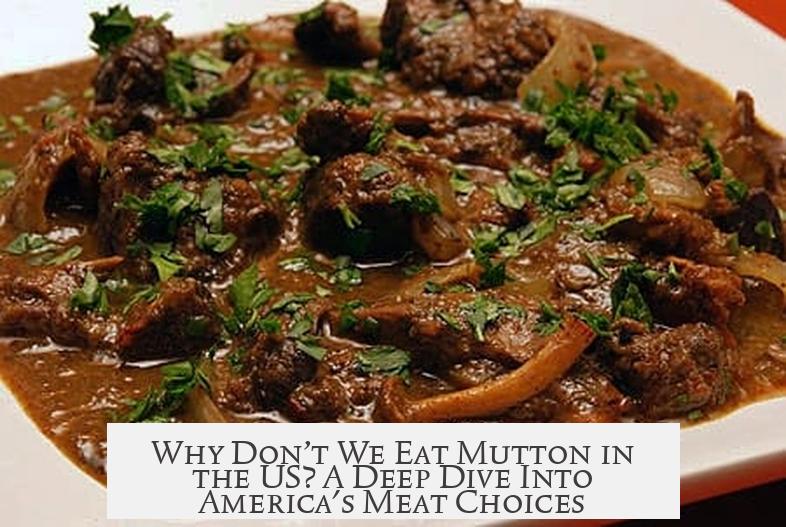
Simply put: Mutton fell out of favor because the beef industry elbowed it aside, industrial farming shaped meat markets, and confusing labeling lets us eat mutton without knowing it. From bustling sheep farms in the 19th century to today’s supermarket shelves, the story of mutton in the US is surprisingly tangled—and a bit like a soap opera starring cows and sheep.
Let’s unravel it.
The Golden Age of Sheep in America: When Mutton Was King
Believe it or not, the US used to be a sheep powerhouse. Back in 1884, the sheep population hit a towering 51 million. That’s a LOT of woolly friends. By 1942, numbers still roared close to 49 million.
Sheep farming was no small business; it was a staple. The USDA keeps detailed records, and those numbers tell us a simple truth: we loved our sheep—and by extension, the meat they provided.
Why then, did lamb and mutton slip off the American dinner plate?
Beef’s Rise: Industrial Farming’s Big Boost
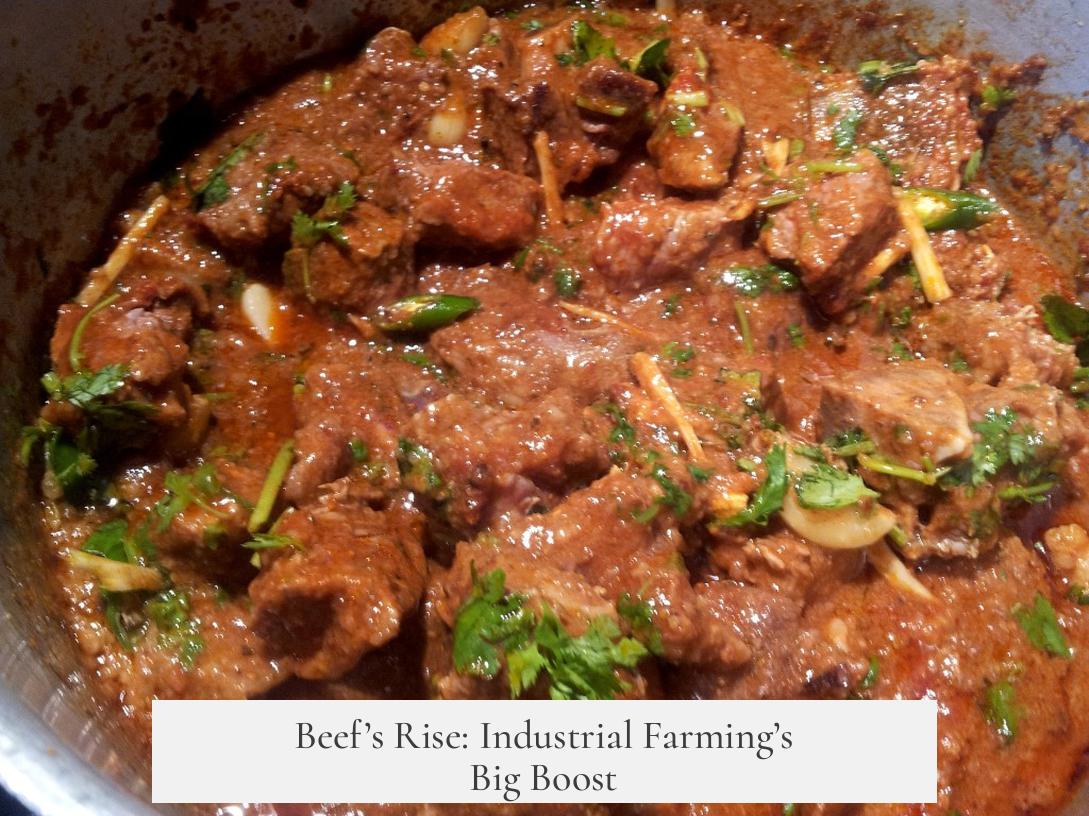
The railroad tracks expanding westward opened up a treasure trove of grazing land in the Midwest. Suddenly, big, resource-hungry beasts like cattle found their perfect playground. Beef cattle need more food and space, but if you have all that land, you can raise bigger animals with a considerable payoff.
The 1950s saw a farming revolution: industrial tracts called CAFOs (Concentrated Animal Feeding Operations) took off. Originally for poultry, this method spread to cattle first because they were easier to manage in such setups than sheep.
Industrial farming’s goal? Maximize production and profits. Beef fit the mold perfectly. Sheep? Not so much.
Why Sheep Lost the Meat Market Tug-of-War
- Resource Competition: Sheep and cattle need land, but cattle need more. Vast Midwestern pastures favored cattle, letting beef pack the shelves faster and fuller.
- Profitability: Beef cattle, despite requiring more feed, delivered economies of scale. One big cow versus a flock of sheep? The math favored beef.
- Industrial Compatibility: CAFOs suit cattle’s needs better. Keeping cattle fenced and protected from predators is simpler than corralling many sheep.
As beef surged, sheep numbers plummeted. It’s a classic market case of outcompeting your neighbor and taking over the block party.
Is the US Really Lamb-Free? Mutton Might Already Be On Your Plate
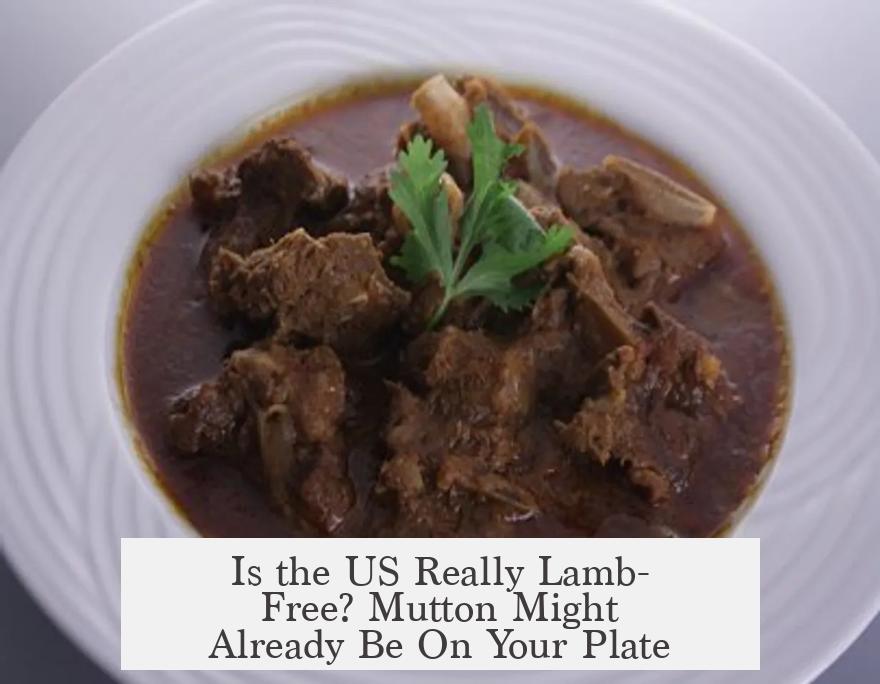
Here’s where it gets juicy—or should we say wooly. The USDA’s labeling isn’t crystal clear. According to federal definitions, “lamb” means “the meat of sheep” with no age limit. That means a 6-month-old lamb or a 3-year-old sheep might both be sold as “lamb.”
This leads to some unsuspecting consumers eating mutton without a clue. The US sheep industry itself admits to this ambiguity.
Unlike the US, other countries like the UK and New Zealand have strict rules. For example, the UK says “lamb” must be from a sheep under 12 months old, and older ones get labels like “hogget” or “mutton.” This helps consumers know exactly what they’re getting.
In America, voluntary quality grading means fewer farmers participate in defining their products, so sometimes “lamb” is really just older sheep meat with a slightly tougher texture and stronger flavor.
Cultural Palettes and Meat Preferences
Even if mutton had maintained a strong presence, would Americans eat it? That’s a mixed bag. US consumers developed a pronounced preference for beef’s milder flavor and familiarity.
Why? Part of it stems from market forces shaping availability and pricing. When beef floods the market, consumers tend to stick with what’s easier to find and cook.
Plus, beef enjoys iconic status in American culture—think burgers, steaks, and BBQ classics. Sheep’s image is more niche, often linked to fancy international dishes rather than everyday meals.
What About Today? The Signature Benefits of Mutton and Lamb
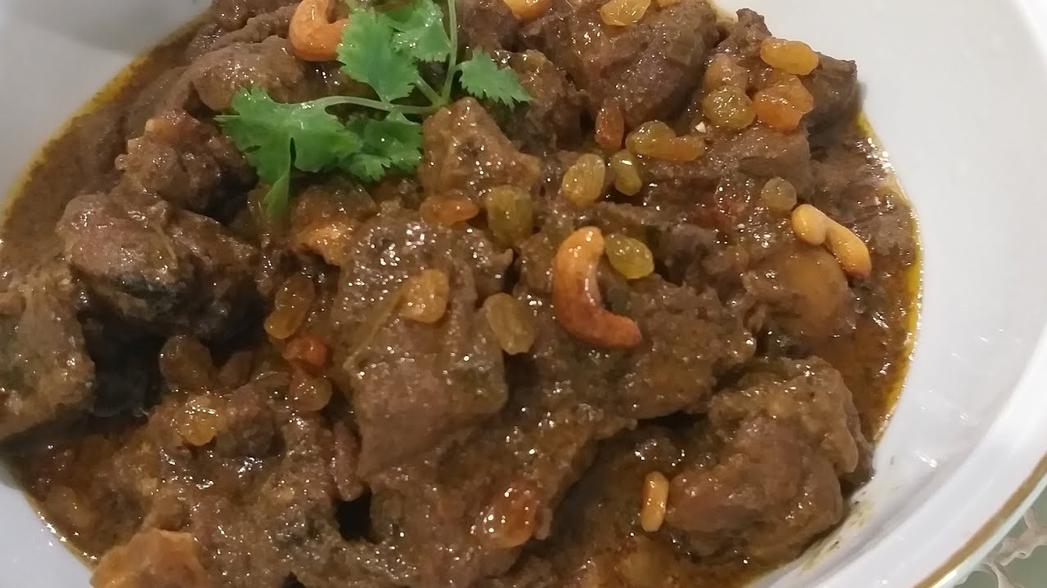
Though sheep farming is little in the US compared to beef, sheep meat has strengths often overlooked. Mutton, for example, provides a richer, more intense flavor beloved in cuisines worldwide, from Indian curries to Middle Eastern grills. It’s also a great source of protein and essential micronutrients.
Farmers who raise sheep today often face challenges selling the meat because of beef’s dominance but may thrive in specialty markets that celebrate mutton’s unique qualities.
Summing Up With Meat on the Brain
| Factor | Why It Matters for Mutton in the US |
|---|---|
| Historical Sheep Numbers | Peaked near 51 million in 1884; major presence gone now |
| Beef Industry Expansion | Access to land + better fit for industrial farming = beef’s dominance |
| USDA Labeling | Lamb legally means sheep meat of any age, blurring mutton visibility |
| Cultural Preferences | Beef’s iconic status overshadows sheep meat’s place at the table |
| Industrial Farming Models (CAFOs) | Favor animals easier to manage on large scale (cattle over sheep) |
What Can You Do If You Want To Give Mutton a Try?
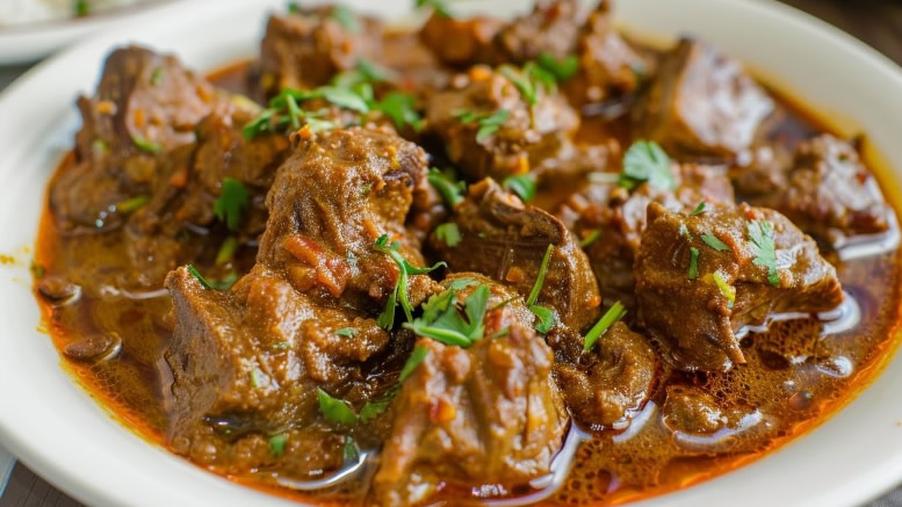
- Look Beyond Mainstream Labels: Specialty butcher shops may specifically offer mutton or older sheep meat.
- Ask Questions: Don’t hesitate to ask your butcher about the age and source of the lamb or mutton.
- Explore Ethnic Markets: Middle Eastern, Indian, or Caribbean stores often showcase mutton cuts not found in big grocery chains.
- Cook Smart: Since mutton is tougher and has stronger flavor, slow-cooking methods can make magic happen.
- Support Local Farmers: Local or heritage sheep farms often produce flavorful meat sustainably.
Final Thoughts: Could Mutton Make a Comeback?
While it’s unlikely sheep meat will eclipse beef again in volume, cultural tides can change. Food trends swing, and consumers increasingly seek diversity on their plates. We adore bold flavors and sustainable eating, and mutton checks both boxes.
So, could we see a mutton renaissance? If consumers demand it and the industry responds with clear labeling and education, maybe one day your BBQ won’t just be beef-friendly, but “mutton-approved.” Meanwhile, the sheep quietly hang out, waiting for their spotlight.
Next time you pick up “lamb” from the store, think twice: is it a classic lamb or a mutton flavor masquerading under a US label? A delicious mystery wrapped in woolly history.
